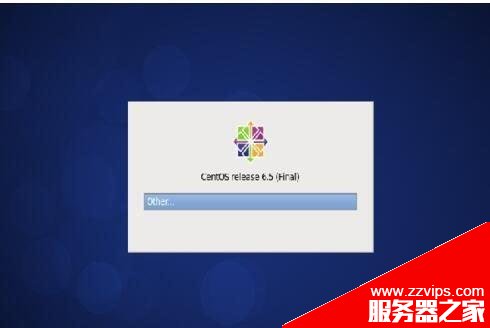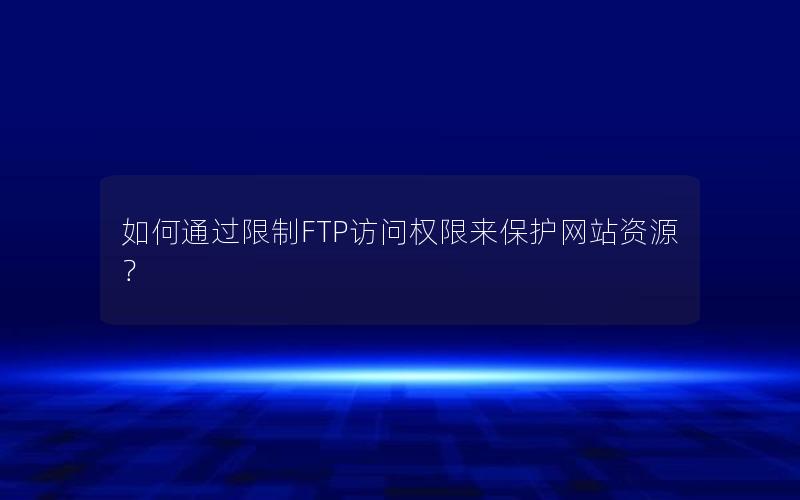最近因为项目需要在做两个项目间数据同步的需求,具体是项目1的数据通过消息队列同步到项目2中,因为这个更新操作还涉及到更新多个库的数据,所以就需要多数据源切换的操作。下面就讲讲在Spring中如何进行数据源切换。这里是使用AbstractRoutingDataSource类来完成具体的操作,AbstractRoutingDataSource是Spring2.0后增加的。
实现数据源切换的功能就是自定义一个类扩展AbstractRoutingDataSource抽象类,其实该相当于数据源DataSourcer的路由中介,可以实现在项目运行时根据相应key值切换到对应的数据源DataSource上。先看看AbstractRoutingDataSource的源码:
|
1
2
3
4
5
6
7
8
9
10
11
12
13
14
15
16
17
18
19
20
21
22
23
24
25
26
27
28
29
30
31
32
33
34
35
36
37
38
39
|
public abstract class AbstractRoutingDataSource extends AbstractDataSource implements InitializingBean {
/* 只列出部分代码 */
private Map<Object, Object> targetDataSources;
private Object defaultTargetDataSource;
private boolean lenientFallback = true;
private DataSourceLookup dataSourceLookup = new JndiDataSourceLookup();
private Map<Object, DataSource> resolvedDataSources;
private DataSource resolvedDefaultDataSource;
@Override
public Connection getConnection() throws SQLException {
return determineTargetDataSource().getConnection();
}
@Override
public Connection getConnection(String username, String password) throws SQLException {
return determineTargetDataSource().getConnection(username, password);
}
protected DataSource determineTargetDataSource() {
Assert.notNull(this.resolvedDataSources, "DataSource router not initialized");
Object lookupKey = determineCurrentLookupKey();
DataSource dataSource = this.resolvedDataSources.get(lookupKey);
if (dataSource == null && (this.lenientFallback || lookupKey == null)) {
dataSource = this.resolvedDefaultDataSource;
}
if (dataSource == null) {
throw new IllegalStateException("Cannot determine target DataSource for lookup key [" + lookupKey + "]");
}
return dataSource;
}
protected abstract Object determineCurrentLookupKey();
}
|
从源码可以看出AbstractRoutingDataSource继承了AbstractDataSource并实现了InitializingBean,AbstractRoutingDataSource的getConnection()方法调用了determineTargetDataSource()的该方法,这里重点看determineTargetDataSource()方法代码,方法里使用到了determineCurrentLookupKey()方法,它是AbstractRoutingDataSource类的抽象方法,也是实现数据源切换要扩展的方法,该方法的返回值就是项目中所要用的DataSource的key值,拿到该key后就可以在resolvedDataSource中取出对应的DataSource,如果key找不到对应的DataSource就使用默认的数据源。
自定义类扩展AbstractRoutingDataSource类时就是要重写determineCurrentLookupKey()方法来实现数据源切换功能。下面是自定义的扩展AbstractRoutingDataSource类的实现:
|
1
2
3
4
5
6
7
8
9
10
|
/**
* 获得数据源
*/
public class MultipleDataSource extends AbstractRoutingDataSource{
@Override
protected Object determineCurrentLookupKey() {
return DynamicDataSourceHolder.getRouteKey();
}
}
|
DynamicDataSourceHolder类如下,实现对数据源的操作功能:
|
1
2
3
4
5
6
7
8
9
10
11
12
13
14
15
16
17
18
19
20
21
22
23
24
25
26
27
28
29
30
31
32
|
/**
* 数据源操作类
*/
public class DynamicDataSourceHolder {
private static ThreadLocal<String> routeKey = new ThreadLocal<String>();
/**
* 获取当前线程的数据源路由的key
*/
public static String getRouteKey()
{
String key = routeKey.get();
return key;
}
/**
* 绑定当前线程数据源路由的key
* 使用完成后必须调用removeRouteKey()方法删除
*/
public static void setRouteKey(String key)
{
routeKey.set(key);
}
/**
* 删除与当前线程绑定的数据源路由的key
*/
public static void removeRouteKey()
{
routeKey.remove();
}
}
|
下面在xml文件中配置多个数据源:
|
1
2
3
4
5
6
7
8
9
10
11
12
13
14
15
16
17
18
19
20
21
22
23
24
25
26
27
28
29
30
|
<!-- 数据源 -->
<bean id="dataSource1" class="org.apache.commons.dbcp.BasicDataSource">
<property name="driverClassName" value="net.sourceforge.jtds.jdbc.Driver">
</property>
<property name="url" value="jdbc:jtds:sqlserver://127.0.0.1;databaseName=test">
</property>
<property name="username" value="***"></property>
<property name="password" value="***"></property>
</bean>
<bean id="dataSource2" class="org.apache.commons.dbcp.BasicDataSource">
<property name="driverClassName" value="net.sourceforge.jtds.jdbc.Driver">
</property>
<property name="url" value="jdbc:jtds:sqlserver://127.0.0.2:1433;databaseName=test">
</property>
<property name="username" value="***"></property>
<property name="password" value="***"></property>
</bean>
<!-- 配置多数据源映射 -->
<bean id="multipleDataSource" class="MultipleDataSource" >
<property name="targetDataSources">
<map key-type="java.lang.String">
<entry value-ref="dataSource1" key="dataSource1"></entry>
<entry value-ref="dataSource2" key="dataSource2"></entry>
</map>
</property>
<!-- 默认数据源 -->
<property name="defaultTargetDataSource" ref="dataSource1" >
</property>
</bean>
|
到这里基本的配置就完成了,下面只要在需要切换数据源的地方调用方法就行了,一般是在dao层操作数据库前进行切换的,只需在数据库操作前加上如下代码即可:
|
1
|
DynamicDataSourceHolder.setRouteKey("dataSource2");
|
上面介绍的是在dao层当需要切换数据源时手动加上切换数据源的代码,也可以使用AOP的方式,把配置的数据源类型都设置成注解标签,在dao层中需要切换数据源操作的方法或类上写上注解标签,这样实现起来可操作性也更强。
|
1
2
3
4
|
@DataSourceKey("dataSource1")
public interface TestEntityMapper extends MSSQLMapper<TestEntity> {
public void insertTest(TestEntity testEntity);
}
|
DataSourceKey注解代码如下:
|
1
2
3
4
5
6
|
@Target({ElementType.TYPE,ElementType.METHOD})
@Retention(RetentionPolicy.RUNTIME)
@Documented
public @interface DataSourceKey {
String value() default "";
}
|
注解配置完后就要写一个实现数据源切换的类,如下:
|
1
2
3
4
5
6
7
8
9
10
11
12
13
14
15
16
17
18
19
20
21
22
23
24
25
26
27
28
29
30
31
32
33
34
35
36
37
38
|
public class MultipleDataSourceExchange {
/**
* 拦截目标方法,获取由@DataSource指定的数据源标识,设置到线程存储中以便切换数据源
*/
public void beforeDaoMethod(JoinPoint point) throws Exception {
Class<?> target = point.getTarget().getClass();
MethodSignature signature = (MethodSignature) point.getSignature();
// 默认使用目标类型的注解,如果没有则使用其实现接口的注解类
for (Class<?> cls : target.getInterfaces()) {
resetDataSource(cls, signature.getMethod());
}
resetDataSource(target, signature.getMethod());
}
/**
* 提取目标对象方法注解和类注解中的数据源标识
*/
private void resetDataSource(Class<?> cls, Method method) {
try {
Class<?>[] types = method.getParameterTypes();
// 默认使用类注解
if (cls.isAnnotationPresent(DataSourceKey.class)) {
DataSourceKey source = cls.getAnnotation(DataSourceKey.class);
DynamicDataSourceHolder.setRouteKey(source.value());
}
// 方法注解可以覆盖类注解
Method m = cls.getMethod(method.getName(), types);
if (m != null && m.isAnnotationPresent(DataSourceKey.class)) {
DataSourceKey source = m.getAnnotation(DataSourceKey.class);
DynamicDataSourceHolder.setRouteKey(source.value());
}
} catch (Exception e) {
System.out.println(cls + ":" + e.getMessage());
}
}
}
|
代码写完后就要在xml配置文件上添加配置了(只列出部分配置):
|
1
2
3
4
5
6
7
8
9
10
11
12
13
14
15
16
17
18
19
20
|
<bean id="multipleDataSourceExchange" class="MultipleDataSourceExchange "/>
<bean id="txManager" class="org.springframework.jdbc.datasource.DataSourceTransactionManager">
<property name="dataSource" ref="multipleDataSource" />
</bean>
<tx:advice id="txAdvice" transaction-manager="txManager">
<tx:attributes>
<tx:method name="insert*" propagation="NESTED" rollback-for="Exception"/>
<tx:method name="add*" propagation="NESTED" rollback-for="Exception"/>
...
</tx:attributes>
</tx:advice>
<aop:config>
<aop:pointcut id="service" expression="execution(* com.datasource..*.service.*.*(..))"/>
<!-- 注意切换数据源操作要比持久层代码先执行 -->
<aop:advisor advice-ref="multipleDataSourceExchange" pointcut-ref="service" order="1"/>
<aop:advisor advice-ref="txAdvice" pointcut-ref="service" order="2"/>
</aop:config>
|
相关文章
- ASP.NET本地开发时常见的配置错误及解决方法? 2025-06-10
- ASP.NET自助建站系统的数据库备份与恢复操作指南 2025-06-10
- 个人网站服务器域名解析设置指南:从购买到绑定全流程 2025-06-10
- 个人网站搭建:如何挑选具有弹性扩展能力的服务器? 2025-06-10
- 个人服务器网站搭建:如何选择适合自己的建站程序或框架? 2025-06-10
- 2025-07-10 怎样使用阿里云的安全工具进行服务器漏洞扫描和修复?
- 2025-07-10 怎样使用命令行工具优化Linux云服务器的Ping性能?
- 2025-07-10 怎样使用Xshell连接华为云服务器,实现高效远程管理?
- 2025-07-10 怎样利用云服务器D盘搭建稳定、高效的网站托管环境?
- 2025-07-10 怎样使用阿里云的安全组功能来增强服务器防火墙的安全性?
快网idc优惠网
QQ交流群
-
2025-05-29 51
-
2025-05-27 51
-
2025-05-29 50
-
2025-06-04 98
-
2025-05-29 21











